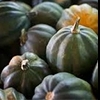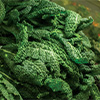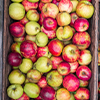
Featured Produce | Fall Quarterly 2020
Featured Produce: Beets
Also known as table beet, garden beet, and blood turnip, beets are in the same family as spinach and are closely related to Swiss chard. Originally the root was used medicinally, and only the leaves were eaten as food. Discovered as a source of sugar in the 19th century, beets have one of the highest sugar contents in the vegetable world. The leading growers of commercial beets today are the United States, Russia, France, Poland, and Germany.
These nutrition-packed root vegetables are an excellent source of folate and a good source of fiber, vitamin C and potassium. Do not forget to eat your beet greens, too—much like you would eat spinach. Beet tops are an excellent source of vitamin A, vitamin C, potassium and magnesium and a good source of calcium, iron, and copper. They also provide antioxidants.
Beets are red, right? Yes—the main variety of beets found in most grocers is the Red Ace. In addition to this common red variety, though, there are golden beets, white beets, Chioggia beets, and baby beets. Golden beets turn a golden orange when cooked and are slightly sweeter than red beets. Chioggia or Candy Cane beets have white and red concentric circles when the beet is cut in half. White sugar beets are grown in the U.S. for granulated sugar. And baby beets are both sweeter and faster cooking than larger beets.
Available almost year-round, beets abound in the winter. Look for smooth, hard, uniformly round beets with no cuts, bruises, wet spots, or shriveled skin. They should be bright and not too large (overgrown beets will be more fibrous). If they have their leaves, they should be bright green. If they have a large, hairy taproot, it means that the beet is probably overgrown and may be tough.
To store beets, trim the leaves two inches from the root and store them separately. While you will want to eat the leaves as soon as possible, the roots will keep in the refrigerator—in a plastic or produce bag—for up to three weeks. Just before cooking, wash the beets gently. If necessary, peel the skin after cooking (peeling is not always needed with smaller beets). To use the greens, wash them in running water to remove the dirt.
Try adding beets to your next meal or make this Golden Beet Salad with Honey Apple Dressing.




